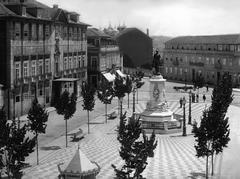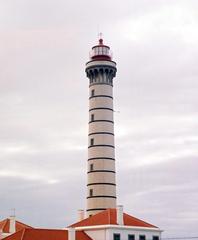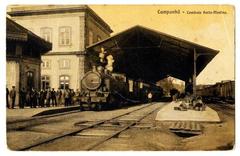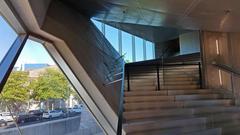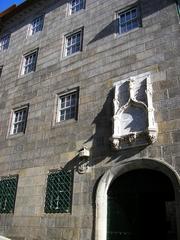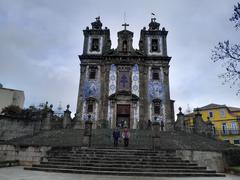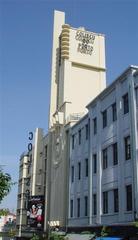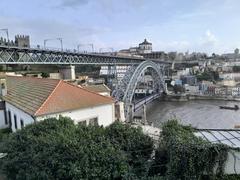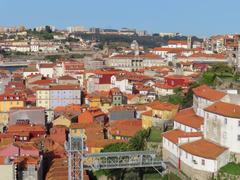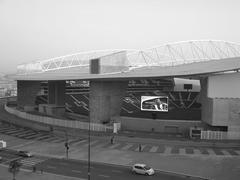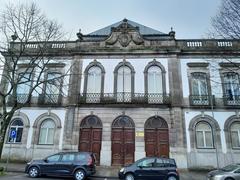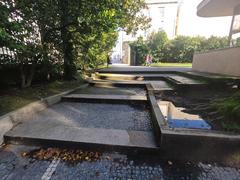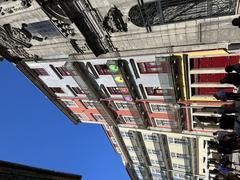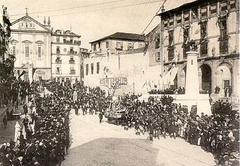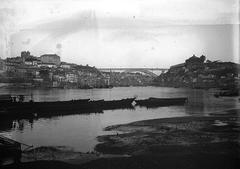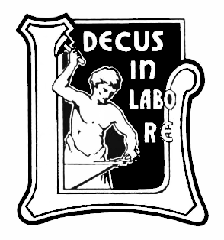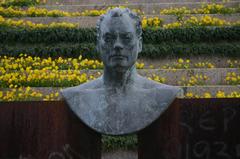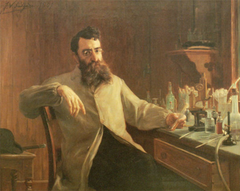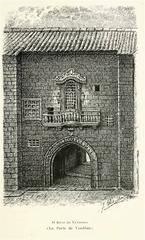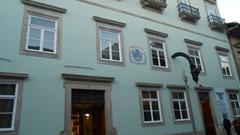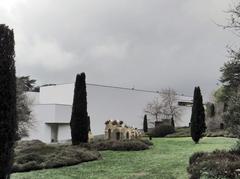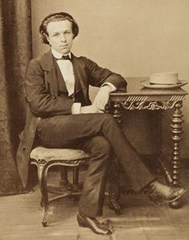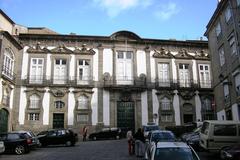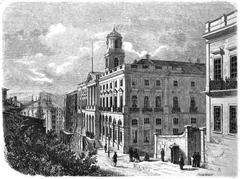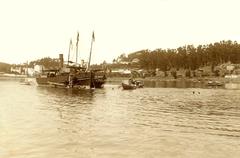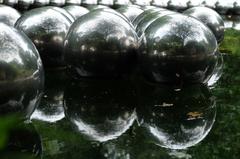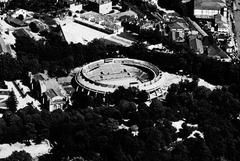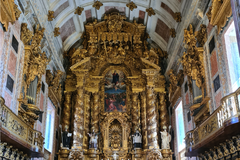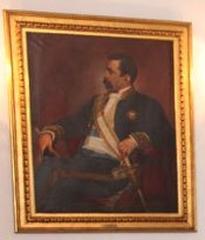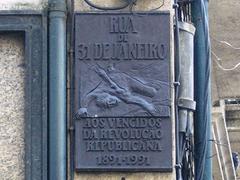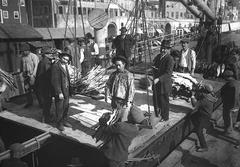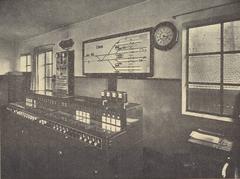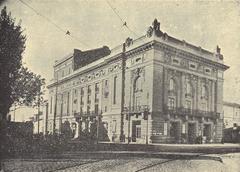Ponte de São João Visiting Hours, Tickets, and Historical Overview
Date: 31/07/2024
Introduction
Ponte de São João, or St. John’s Bridge, stands as a monumental piece of modern engineering in Porto, Portugal. Inaugurated on June 24, 1991, this bridge was designed by the renowned Portuguese engineer Édgar Cardoso as a replacement for the aging Maria Pia Bridge, which had become unsuitable for contemporary rail traffic (Porto City Guide). The bridge is not only a critical component of Porto’s transportation network but also a symbol of the city’s continuous progress and innovation. Its minimalist design, characterized by the use of reinforced concrete and a pristine white finish, marks a significant departure from traditional arched structures, instead opting for a continuous multi-lane span supported by two colossal pillars embedded into the riverbed (Porto Bay).
The Ponte de São João plays a vital role in connecting the Porto-Campanhã train station to destinations in the south, alleviating traffic congestion on other bridges such as the Luis I and Arrábida bridges (Nomads Travel Guide). Its importance is further emphasized by its cultural significance, named after São João, the patron saint of Porto’s summer festivities, and inaugurated on his feast day. This bridge, which is often illuminated during the São João festival, offers a stunning visual spectacle that draws both locals and tourists alike (Porto Bay). This guide aims to provide comprehensive details about visiting Ponte de São João, including its historical context, architectural features, visiting tips, and its role in modern developments.
Table of Contents
- Introduction
- Construction and Design
- Engineering Challenges and Controversies
- Significance and Impact
- Architectural Features
- Visitor Tips
- Historical Context
- Modern Developments
- Cultural Significance
- Future Prospects
- FAQ
- Conclusion
Ponte de São João: Visiting Hours, Tickets, and Historical Significance in Porto
Introduction
The Ponte de São João in Porto is more than just a bridge; it is a marvel of modern engineering that holds cultural, historical, and practical significance. Whether you’re a history buff, a photography enthusiast, or a traveler looking to explore Porto’s rich infrastructure, the Ponte de São João offers something for everyone.
Construction and Design
Inaugurated on June 24, 1991, the Ponte de São João was constructed to replace the aging Maria Pia Bridge, which had become inadequate for modern rail traffic due to its single rail and limited speed capacity (Porto City Guide). Designed by the renowned Portuguese engineer Édgar Cardoso, it features a minimalist design characterized by its use of reinforced concrete and a clean white paint finish. Unlike its predecessors, it does not feature an arched structure but instead boasts a continuous multi-lane span supported by two majestic pillars embedded into the riverbed (Porto Bay). This design choice allows for seamless passage across the bridge, facilitating efficient transportation for both commuters and travelers.
Engineering Challenges and Controversies
The construction of the Ponte de São João was not without its challenges and controversies. Édgar Cardoso’s involvement in the project was so contentious that he did not attend the bridge’s inauguration (Porto City Guide). Despite these issues, the bridge stands as a testament to modern engineering and has significantly improved the transportation network in Porto.
Significance and Impact
The Ponte de São João serves as a vital link between the Porto-Campanhã train station and destinations in the south, with its first stop being Vila Nova de Gaia (Nomads Travel Guide). This bridge has played a crucial role in alleviating traffic congestion on other bridges, such as the Luis I and Arrábida bridges, by providing an alternative route for rail traffic.
Architectural Features
Visually, the Ponte de São João exhibits a modern and streamlined appearance, aligning with contemporary architectural sensibilities. Its efficient design and functionality contribute to the smooth flow of traffic and the overall development of Porto’s transportation network (Porto Bay).
Visitor Tips
For those looking to visit the Ponte de São João, there are several key points to consider:
- Best Viewing Spots: The bridge can be best viewed from the banks of the Douro River or from the high parts of the city. The Fontainhas viewpoint offers excellent views of both the Ponte de São João and other iconic bridges like the Luis I and Maria Pia bridges (Porto City Guide).
- Photography: The minimalist design and clean lines of the bridge make it a popular subject for photography. Early morning or late afternoon light provides the best conditions for capturing its architectural beauty.
- Accessibility: The bridge is easily accessible via public transportation, with the Porto-Campanhã train station being a major hub for trains heading south.
- Visiting Hours and Tickets: While the bridge itself is always open to the public, train schedules and accessibility may vary. It’s advisable to check the latest train timetables and ticket prices on the official Porto public transportation website.
Historical Context
The Ponte de São João is part of a rich history of bridge construction in Porto, a city known for its numerous bridges spanning the Douro River. The first bridge in Porto, the Ponte de Barcas, was inaugurated in 1806 and was made using several boats with wooden planks placed between them (Porto City Guide). This was followed by the construction of the Maria Pia Bridge, designed by Gustave Eiffel, which was Porto’s first permanent bridge and a significant milestone in the city’s infrastructure development (Porto City Guide).
Modern Developments
In recent years, the Ponte de São João has continued to play a crucial role in Porto’s transportation network. Its minimalist design and efficient functionality have made it a model for modern bridge construction in the region. The bridge’s ability to handle high volumes of rail traffic has also contributed to the economic development of Porto and its surrounding areas.
Cultural Significance
The Ponte de São João is named after São João, the patron saint of Porto’s summer festivities. The bridge’s inauguration date, June 24, coincides with the feast day of São João, adding a layer of cultural significance to its history (Porto Bay). The bridge is often illuminated during the São João festival, creating a stunning visual spectacle that attracts both locals and tourists.
Future Prospects
Looking ahead, the Ponte de São João is expected to continue serving as a critical component of Porto’s transportation infrastructure. Plans for further modernization and maintenance are likely to ensure that the bridge remains a vital link for rail traffic in the region. Its role in connecting Porto with southern destinations will continue to be of paramount importance as the city grows and develops.
FAQ Section
- What are the visiting hours for the Ponte de São João? The bridge itself is always open to the public. However, train schedules and accessibility may vary, so it’s advisable to check the latest train timetables.
- Do I need a ticket to visit the Ponte de São João? No, visiting the bridge is free. However, if you plan to travel by train, you will need to purchase a ticket.
- What are the best times for photography at the Ponte de São João? Early morning or late afternoon light provides the best conditions for capturing its architectural beauty.
- Are there special events held at the Ponte de São João? The bridge is often illuminated during the São João festival, creating a stunning visual spectacle.
Conclusion
In summary, the Ponte de São João stands as a symbol of progress and modernity in Porto. Its construction marked a significant milestone in the city’s history, and its continued use underscores its importance in the region’s transportation network. Whether admired from a distance or experienced first-hand while crossing, the Ponte de São João represents a remarkable achievement in engineering and design.
Call to Action
Stay up to date with the latest information about the Ponte de São João and other historical sites in Porto by downloading our mobile app Audiala. Follow us on social media for updates and more engaging content!
References
- Porto City Guide, n.d., https://portocityguide.com/bridges/
- Porto Bay, n.d., https://www.portobay.com/en/in-portobay-blog/history-of-the-bridges-of-porto/
- Nomads Travel Guide, n.d., https://www.nomads-travel-guide.com/6-bridges-cruise-in-porto-is-it-worth-it/
- Portugal Portfolio, n.d., https://www.portugalportfolio.com/celebrate-sao-joao-in-porto-the-ultimate-guide-for-2024
- Remote Clan, n.d., https://www.remoteclan.com/portugal/porto/bridge-in-porto
